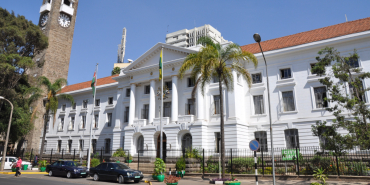How Nairobi Became One of the World’s Most Polluted Cities

Once celebrated for its cultural vibrancy and economic growth, Nairobi is now contending with a serious environmental threat: worsening air pollution that has placed the city among the most polluted urban centres worldwide.
Recent air quality data has raised significant alarm, with Nairobi recording dangerously high levels of pollution, prompting urgent concern from health experts and residents. The crisis is driven by a combination of ageing vehicles, poorly regulated industries, and widespread open burning. On 13 August, Nairobi briefly ranked as the world’s second most polluted major city, according to data from IQAir.
Although Kinshasa later overtook it, the persistent presence of fine particulate matter, especially PM2.5, remains a major concern. These tiny particles can penetrate deep into the lungs and enter the bloodstream, with concentrations in Nairobi currently exceeding World Health Organization (WHO) guidelines by more than three times. The health implications are severe, ranging from respiratory and heart diseases to a heightened risk of cancer.
The impact is already being felt across the city, particularly in densely populated, low-income areas. Dr Jackim Nyamari, a population health expert at Aga Khan University, reports increasing cases of lung cancer, early-onset asthma, and signs of premature lung ageing—even among young adults. Short-term exposure to pollutants such as carbon monoxide is also causing immediate symptoms like headaches and breathing difficulties.
Emerging studies now suggest links between air pollution and increased menstrual pain, as well as potential birth defects, deepening public health concerns. The root causes of Nairobi’s air pollution are diverse and deeply embedded in its urban systems. Emissions from old, poorly maintained vehicles are a major contributor, along with unregulated industrial output and the heavy dust generated by construction activity.
However, one of the most harmful practices remains the open burning of waste—especially in informal settlements—where burning tyres to recover scrap metal is common. In places like Kariobangi and Mukuru, this practice highlights the stark trade-offs between economic survival and environmental safety. The crisis has already forced lifestyle changes among residents.
Mary Njoki, a former roadside vendor, now produces soap detergent from her home after doctors warned her that prolonged exposure to traffic fumes could be fatal. Community efforts, led by health workers like Isabella Nzioki, are providing some relief. Initiatives include shifting business hours to avoid peak pollution times and encouraging safer waste disposal. However, these grassroots efforts cannot address the full scale of the problem.
The issue is not unique to Nairobi. Other East African cities, including Kampala and Addis Ababa, also report worrying air quality levels. While Nairobi has shown slight improvement in its global air quality ranking—from 79th in 2023 to 83rd in 2024, according to the World Air Quality Report—it still regularly falls within ranges considered "moderate" to "unhealthy for sensitive groups," calling for continued and intensified action.














Add new comment